
996 Setting The Squish
This 996 had to come apart to have a bent output shaft replaced. How the shaft came to be bent, I have no idea. They are not soft, or easy to bend, and it had never had a chain problem.
So, dunno, and there-s no point asking.
Usually, when something has to come out and apart, there-s a few things I like to do. One is try to convince the owners to make any changes they are thinking of while the engine-s in bits, and the labour cost of doing it later is greatly reduced. The other is re-shimming the cranks/main bearings.
The main bearings on the Ducati engines are set up with some preload. Given they are a v-twin, there is just one big end journal carrying both rods, and a big ball bearing on either side in the crank cases. The ball bearings are angular contact, meaning they can take thrust as well as the normal rotating load. So, they need to be assembled with a little pre load to make sure there is no free play in the thrust side of things.
The spec for this pre load has always been 0.15mm, and the later engines all use big shims on either side, varying from 1.90 to about 2.50mm. The earlier (pre -99) engines used thin shims stacked as required.
I had become suspicious of the factory set preload however, after pulling apart a couple of engines we-d had run big ends very early in their life from the -00 model series. These engines had so much preload on the cranks that grabbing the shaft at the alternator end (approx 25mm diameter) with one hand and trying to turn it resulted in not much happening. You really needed to push the rods to make them turn.
I was wondering if too much preload was contributing to the big end problems.
Then we had to re-case a late 600M after it had the side stand mount bosses torn out in a crash. It too had a rather tight crank, so it seemed the big end failures very early in the bikes life were not due to the crank preload. When I was in Italy early last year doing a factory training course I asked about the crank preload. They seemed to think it wasn-t an issue, and pointed out a procedure to check for excessive preload.
You measure the run out in the (from memory) right hand (or primary drive) crank snout. There is a value that is acceptable, over which there may be a problem. This run out comes from the big end bending slightly due to the preload.
It sounded wacky to me too, but that-s the way it is, it would seem. The big end failures, we were told, were due to the crank supplier not cleaning them properly after machining. A problem solved in production before it started appearing in use.
I still do check and re-shim every crank I get to, however, and usually remove around 0.20 to 0.30 from the preload. After which they spin just nice, with a little noticeable drag. This 996 was no exception. I was told by owners of bikes that had done big ends that they were noticeably smoother after we-d done them, so this may contribute there.
It may also contribute to increased power output on the dyno.
Another thing that-s very easy to do when you have an engine apart is to check and set the squish. Being the distance between the piston and the flat face of the head at TDC. This is something mentioned in the fifth 888 report.
Usually on the 4V engines it is around 1.3 to 1.4mm std, although the 748R we did was pretty much spot on 1.0mm, so maybe they pay more attention to them. The usual std for minimum piston to head clearance is 1.0mm, although you can go to 0.9mm if you-re feeling particularly game. Engines with Ti rods can go lower, as the rods don-t stretch at higher RPM.
Steel ones do though. This engine had 1.4mm std, and we set it to 1.0mm. To do this we used base gaskets from the 996Racing parts list, available on the electronic Ducati parts catalogue known as Softway.
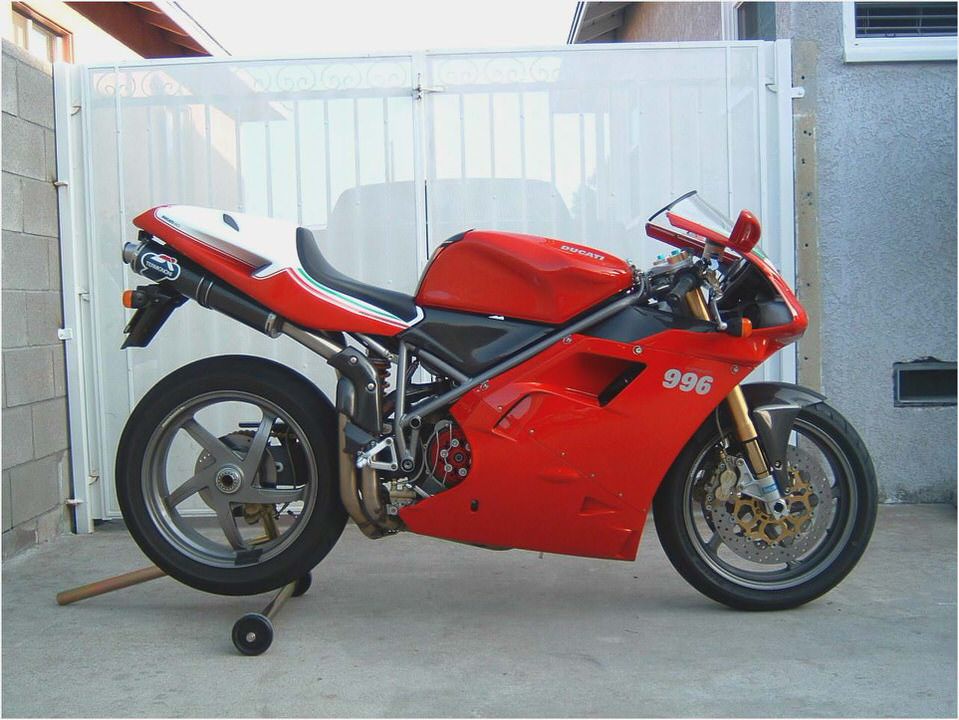
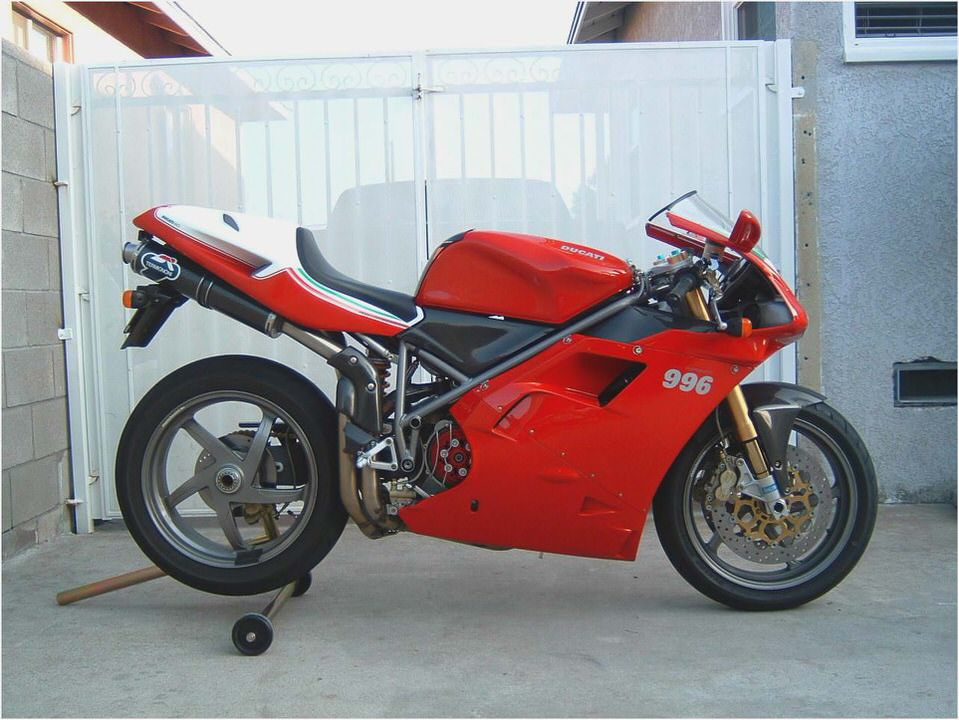
The std base gasket thickness is 0.6mm for a 996, the 996Racing options range from 0.20 to 0.40mm, in 0.05mm steps. The part numbers are 78610411A – E, in this case we used #A, 0.20mm.
I also measured/calculated the compression ratio, just to see what it was. The cylinders, pistons and heads on all 996 engines, both Strada and SPS, are the same from -99 onward, so this meant I didn-t have to check the 996S I also had apart at the time. We measured the volume of the combustion chamber and the piston valve reliefs, and measured the thickness of all the gaskets to give us what we needed to know. With 1.4mm squish std, this engine had 11.35:1 compression.
As reassembled with 1.0mm squish, it had 12.05:1, which is just dandy. Reducing the squish raises the compression and also makes the engine more resistant to detonation, so it-s a nice thing to do.
We also reset the cam timing to the usual specs we use, and machined the flywheel down from the std 1890 to 870 grams, which really helps the response. Some say this shows up on a Dynojet as more power, but I-ve never been able to pick it on various bikes I-ve done. This bike also had an Arrows 45/50mm half system and Ultimap UM222 single injector chip fitted previously.
Once it was all assembled and running, we headed for the dyno. It turned out to be the most powerful 996Strada I-ve dyno-d by far, making 126 hp. The curve below shows this bike in red compared to an otherwise identical – cam timing, exhaust system, chip – bike in green that had not been apart (to my knowledge anyway) with similar km. Like the 888, the big improvement came at the top end, more so than the mid range.
The shape of the curve is also the same, as you-d expect without any airflow capacity mods.
Dynograph courtesy of DYNOBIKE (03) 9553 0018
I-m not sure how this owner is going to use this bike, but for a track bike, that extra top end would be rather helpful. The extra response due to the compression and light flywheel was very obvious riding it – this bike was quite flighty in the lower gears. And certainly very quick. The next graphs – power then torque – have a std with Termis and chip 996 added in blue for a comparison.
The 45/50mm half system of the red and green bikes does cause a loss between 4,000 and 6,500 RPM, but it-s still a very nice improvement from std.
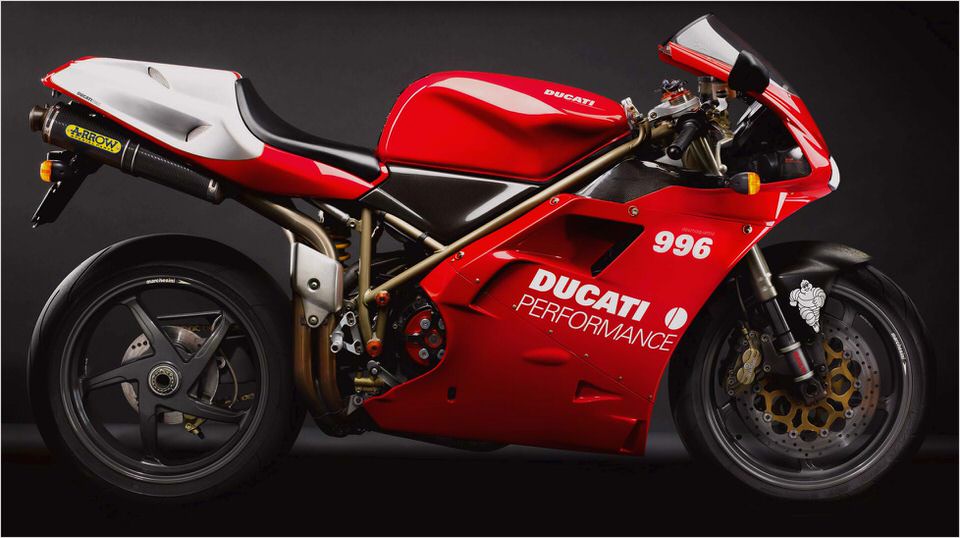
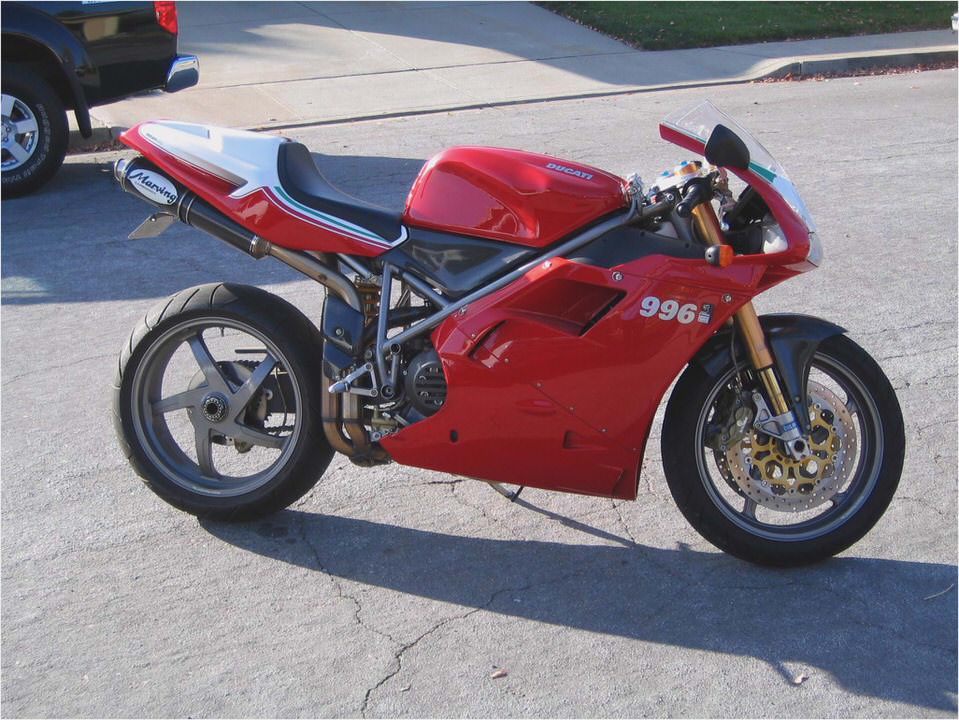
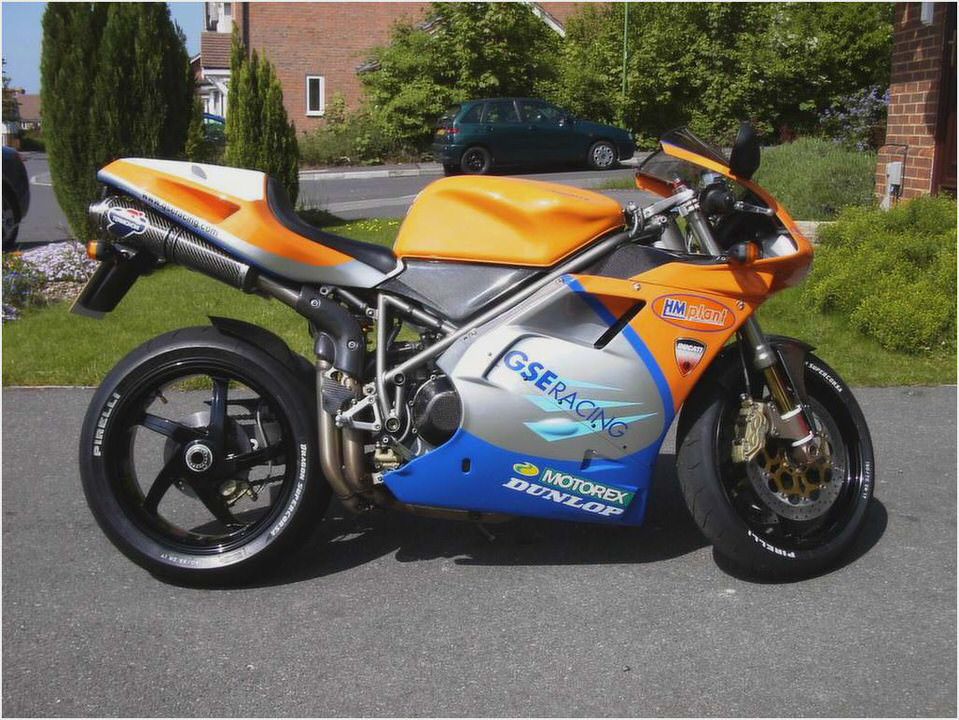
- Collectable: Kawasaki H2-News & Reviews-Motorcycle Trader
- 1965 250Cc Ducati Classic Sport Bikes For Sale
- For Sale Ducati 1198S Corse SE
- OZ Motorbike Forged Alum Front Wheel: Ducati 749 / 999 / 1098 / 1198 /…
- Ducati S2R 1000 ?
